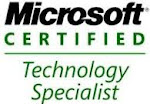Recently I got an issue while
login to one of the host-named web application. All of sudden when I try to
open the site, it shows me access denied error. I have removed and added myself
as Site collection Administrator and still same error. I have added myself in
Super reader and Super User in Web application policy. But still same issue.
After checking for some more
time, I found that I am able to access all the pages and libraries by entering
the URL directly (Eg: /SitesPages/Home.aspx , /Pages/Default.aspx) . I have
verified if this is issue with DNS entry, but I am able to navigate to the site
but it is throwing access denied error. I have verified Authentication providers,
if there is any issue with Claims authentication. But nothing worked.
After some time I found this post
on the issue. We got the issue due to Authentication settings got corrupted. After
enabling and disabling the Anonymous access for the web application my issue
got resolved.
Here are the steps to fix the
issue,
Open
SharePoint 2013 Central Administration site, click on Manage web
applications.
Open
the authentication provider zone we are using, We can see it as default.
Check the Enable anonymous access option
and then Save the Authentication settings. It can take some time to
save the settings, so after click Save just need to wait for the Authentication
Setting window to close.
After
the Authentication settings window closes we should be able to get to the home
page without any Access Denied errors.
Now
we don't want to leave anonymous access enabled so once again open the
authentication provider zone and un-check Enable anonymous access and then Save
the Authentication settings. We should now still be able to access the root
site of web application and the issue has been fixed.














.jpg)






